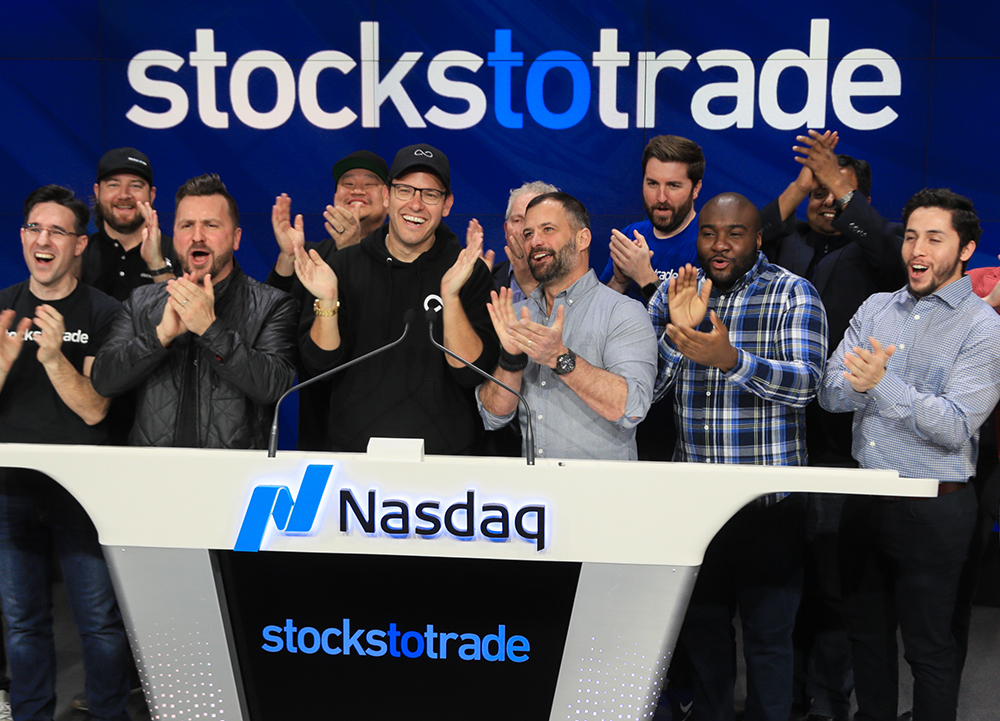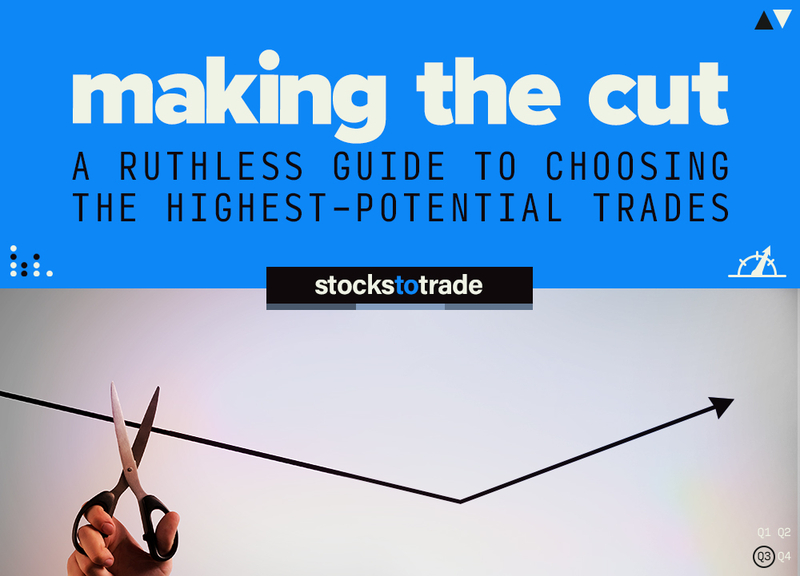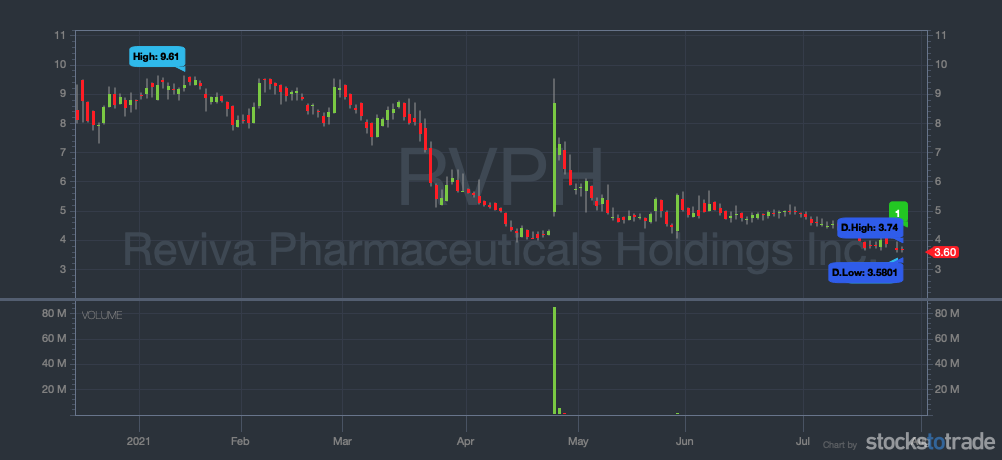There are too many stocks out there. You can’t trade every single one.
Then again, who would want to? There are a lot of loser stocks out there…
If you ask me, too many traders have a scarcity mindset when it comes to finding trades. They think they have to hunt among the many thousands of stocks out there to find a diamond in the rough.
They think if they find the right trade, they’ll make enough money to buy a Lamborghini.
Forget about finding the big one.
I prefer an abundance mindset. There are plenty of amazing opportunities out there, ripe for the picking. It’s my job to whittle down the massive list of potential plays to the very best ones.
How do I figure out what stocks make the cut? Keep reading to learn my method for choosing the highest-potential trades.
This post is adapted from the lessons I teach in my Day Trading 101 series — just one of the many no-cost resources I offer.
Table of Contents
An Important Reminder
Before getting into my process for finding high-potential trades, I need to remind traders of something…
When it comes to day trading, tickers are really just vehicles for trades. Think of them as a bunch of letters and a chart — DON’T think of them as actual companies you want to invest in.
I know that this can be hard to understand, especially for new traders. But believing in these companies usually only leads to bag-holding and disappointment.
Choose day trades based on the chart, the price action, and whether the stock fits your criteria.
Don’t be afraid to be ruthless in cutting stocks off of your watchlist and cutting losses if trades go against you.
Note: Want to see what’s on my watchlist every week? Sign up for my NO-COST Weekly Watchlist here!
How to Choose High-Potential Trades
With that bit of housekeeping out of the way, let’s get on to the art of choosing the highest-potential trades…
Start By Screening
Good news: with a stock screener like StocksToTrade on your side, it’s easy to filter down that mountain of stocks to a manageable molehill of potential trades.
With built-in scans as well as customizable scans that you can set up, it’s easy to tailor your searches to suit your specific trading style.
Plus, STT charts are fully loaded links to news and social media mentions. That can help you strengthen the case for any trade.
Additionally, STT’s Breaking News chat tool can give you a heads up on catalysts that could move the stocks at the top of your watchlist.
A screener like STT is a vital tool when moving forward with the following process of rating trades. But I think you should see it for yourself … Try StocksToTrade for 14 days — it’s just $7.
Working Your Worksheet
I think every trader should use some sort of worksheet to find the ‘why’ behind a trade.
I use a worksheet. It’s based on the one I use in my SteadyTrade Team sessions to talk about the pros and cons of potential trades.
Grade Your Trade
I go through a list of technical and fundamental indicators…
I like to check all the boxes and thoroughly evaluate the potential of a play.
Below, I’ll list how I rate potential plays. I’ll also demonstrate the criteria using a real-life recent runner as an example: Reviva Pharmaceuticals Holdings, Inc. (NASDAQ: RVPH).
RVPH had a big spike in April 2021. But I don’t want you to think you shouldn’t pay attention because it’s over and done with.
Don’t focus on the ticker — focus on the process and criteria. These lessons can carry over. Follow along with my commentary of RVPH in this installment of my Day Trading 101 series:
Is It Low Float?
Different traders have different opinions of what constitutes low float. I consider low float stock to be one with a float of under 10 million. Need a primer on stock float? Check out this post.
RVPH Stock Example: It checks this box! At six million float, RVPH is well under my 10 million threshold for a low float stock.
Is It Up Over 10%?
Honestly, this is the bare minimum I’d look for in the current market. Basically, you want to make sure the stock is making a price move that’s worthy of your attention.
RVPH Stock Example: RVPH had closed the day before at $4.30 and it was up to $5 on the day in question. Yep — that’s over 10%.
Does It Have Unusual Volume?
For me, unusual means significantly higher than the 60-day average volume. The higher above that average, the better the opportunity. This is one of the biggest criteria I look for on any stock. Higher volume means more people want in on the trade.
RVPH Stock Example: RVPH’s 60-day average is 36,000 shares per day. But on the day I was looking, the first five-minute candle of the day had one million shares traded in about five minutes. 85 million shares traded by the end of the day. I’d say that’s unusually high.
Is It a Former Runner?
History doesn’t repeat, but it often rhymes. With that in mind, take a look at the one-year chart for your trade contender. Ideally, you want to see big moves at least once or more in the recent past.
When you get a low float stock that’s spiking with unusual volume, traders remember it from months ago and pile in. Need a refresher on stock volume? Click here.
RVPH Stock Example: In the year preceding the spike, RVPH had previously gone from $7 to $10 in a day. It’s run before, which tells me it could potentially do it again.
Is There a Catalyst?
Is there a catalyst or a reason for people to be excited about this stock? Look for a press release, a new executive, or a good earnings report. You want something that gets people pumped.
RVPH Stock Example: Yep, there’s a catalyst. At 6 a.m., RVPH had dropped Phase 2 clinical trial results related to schizophrenia. Then at about 10 a.m, there was that big move. You don’t need to be an expert to see the connection.
Is It Breaking a Whole-Dollar or Half-Dollar Level?
You’ll see this over and over … Watch a stock when it breaks a dollar or half-dollar level. It tends to spike higher faster once it breaks those levels.
I don’t know exactly why, but the human mind tends to fixate on whole-dollar and half-dollar levels. It’s sort of like why cars are priced at $19,999 instead of $20,000. Those levels are psychological.
RVPH Example: When RVPH broke $5, it spiked fast and broke $6 fast. Then it pulled back and then quickly broke $7. It kept responding to those key levels.
Are There Clear Support Levels To Help You Base Your Risk?
You need some sort of level to base your risk. It could be 52-week highs, red-to-greens, or whole dollar or half dollar levels. Basically, you want a base level to set your risk. For instance, if you’re buying the $1.50 level and the last low was $1.25 that could be a starting point.
RVPH Example: With RVPH, there was a $6 break in the morning. There was also the potential to risk off of VWAP. In case you’re not familiar, VWAP is related to one of my number-one day trading patterns for new traders. Learn more here.
Next Steps
Once I’ve worked through the worksheet and asked myself these questions, I evaluate the overall quality of the setup.
Maybe you’ll rank it on a 1–10 scale or give it a letter grade. Regardless, ask yourself: Is this trade checking all the boxes?
For example, if you graded it a C-, is it work risking your hard-earned cash?
Be Prepared…
 In my 15+ years of trading, I’ve learned something…
In my 15+ years of trading, I’ve learned something…
There will always be another opportunity.
In a market like we’ve experienced in 2020 and 2021, you can’t bag hold. You can’t violate your stops.
And you can’t dwell. Do what you can to research a trade, like going through the process detailed in this post. But if it doesn’t work out, move on.
Don’t put yourself in a bad situation. Another trade’s right around the corner. Don’t focus on huge trades or buying a Lambo. Focus on staying in the game.
By going through this list and evaluating every trade, you’re building up your knowledge base. You’ll start to see what moves stocks and better recognize it the next time you see similar opportunities.
Ready to keep learning? Level up your trading education by joining my mentorship program, the SteadyTrade Team. We’re all working on getting a little better every day…
Have you checked out my Day Trading 101 course yet? Do you find lessons like this helpful? Please share with your trading buddies and leave a comment below!


